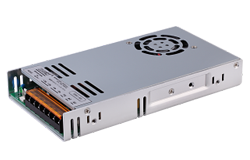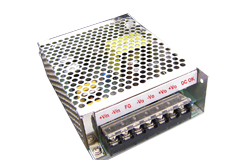소식
How to convert AC to DC power 12V?
저자: ZYG 전원 모듈 Time: 2023-5-12
소개
Alternating current (AC) is a type of electrical current that flows back and forth in a circuit. Direct current (DC), on the other hand, flows in a single direction. While many household appliances and electronics run on DC, the power that comes out of a wall socket is AC. Therefore, to use these appliances and electronics, you need to convert AC to DC power.
In this article, we will explain how to convert AC to DC power, specifically 12V DC. We will discuss the different types of AC to DC converters, step-by-step instructions on how to convert AC to DC power, and some safety tips to keep in mind while doing so.
Types of AC to DC Converters
There are mainly three types of AC to DC converters – rectifiers, transformers, and voltage regulators. Here is a brief overview of each:
1. Rectifiers
A rectifier is a device that converts AC voltage into a pulsating DC voltage. The simplest form of a rectifier is a diode, which allows current to flow in only one direction. However, diodes are not very efficient and can only handle low currents. For higher currents, bridge rectifiers are used, which consist of four diodes arranged in a bridge configuration.
2. Transformers
Transformers are used to step down the AC voltage to a lower level. They work on the principle of electromagnetic induction, where a changing magnetic field induces a voltage in a nearby conductor. The output voltage of a transformer can be further rectified to DC using a rectifier.
3. Voltage Regulators
Voltage regulators are used to maintain a constant DC output voltage, regardless of variations in the input voltage or load current. They can be either linear or switching regulators, depending on the method used to regulate the output voltage.
Step-by-Step Instructions on How to Convert AC to DC Power
Now that we have discussed the different types of AC to DC converters, let\’s look at step-by-step instructions on how to convert AC to DC power.
Step 1: Determine the Input Voltage
The input voltage is the voltage of the AC power source that you want to convert to DC. In our case, we want to convert 120V AC to 12V DC.
Step 2: Choose the AC to DC Converter
Choose the appropriate AC to DC converter based on your requirements. For our case, we will use a transformer to step down the voltage, followed by a bridge rectifier to convert the AC voltage to DC.
Step 3: Connect the Transformer
Connect the primary winding of the transformer to the AC power source and the secondary winding to the rectifier. Make sure to follow the manufacturer\’s instructions for wiring the transformer.
Step 4: Connect the Rectifier
Connect the output of the transformer to the input of the rectifier. If you are using a bridge rectifier, connect the AC input to the two outer terminals, and the DC output to the two inner terminals.
Step 5: Filter the DC Output
The output of the rectifier will be a pulsating DC voltage, which will have a lot of ripples. To filter these ripples, connect a capacitor across the output of the rectifier. The capacitor will smooth out the DC voltage.

Step 6: Regulate the DC Output
If you want a constant 12V DC output, you will need to regulate the DC voltage. You can use a linear or switching regulator for this purpose. Connect the output of the regulator to a load, such as an electronic device.
Safety Tips
While working with electricity, it is important to take some safety precautions to avoid any accidents. Here are some safety tips to keep in mind while converting AC to DC power:
– Always wear rubber gloves and safety glasses while working with electricity.
– Make sure to turn off the power supply before making any connections.
– Use insulated tools to avoid any accidental shock.
– Do not touch any of the electrical components while the circuit is powered on.
– Make sure to ground the circuit properly to avoid any stray voltages.
결론
Converting AC to DC power is a simple process that can be done using a transformer and a rectifier. By following the step-by-step instructions and taking the necessary safety precautions, you can easily convert AC to DC power for your electronic devices.
관련 정보
-
2023-5-30
12V AC-DC Converter: Efficient Power Conversion for Your Electrical Needs
When it comes to powering electronic devices, efficient power conversion is crucial to ensure the longevity and reliability of the equipment. One such technology that has gained popularity in recent years is the 12V AC-DC converter. In this article, we will explore what this technology is, how it works, and its benefits. What is a 12V AC-DC converter? A 12V AC-DC converter is a device that converts alternating current (AC) into direct current (DC) at a voltage of 12 volts. It is commonly used to power small electronic devices, such as laptops, smartphones, and LED lights, that require a stable and reliable source of power. How does it work? The 12V AC-DC converter works by using a transformer to step...
세부 정보보기 -
2023-8-23
AC DC Converter ZP Series: Efficient Power Conversion for All Your Needs
Introduction: The demand for efficient power conversion solutions is higher than ever before. An AC DC converter is an essential component that enables the conversion of alternating current (AC) to direct current (DC), making it suitable for various applications such as power supplies, electric vehicles, renewable energy systems, and more. The ZP Series AC DC converter is a top-of-the-line product designed to provide efficient power conversion for all your needs. This article will explore the features, benefits, and applications of the ZP Series, highlighting why it is the ideal choice for your power conversion requirements. Efficient Power Conversion: One of the key features of the ZP Series AC DC converter is its exceptional efficiency. With an efficiency rating of up...
세부 정보보기 -
2023-7-20
What are the functionality and benefits of a bidirectional converter?
Introduction In recent years, there has been a growing demand for efficient energy conversion systems that can seamlessly handle bidirectional energy flow. This need has led to the development of bidirectional converters, which have gained immense popularity in various applications such as renewable energy systems, electric vehicles, and energy storage systems. This article aims to explore the functionality and benefits of a bidirectional converter in detail. What is a Bidirectional Converter? A bidirectional converter is an electronic device that can convert electrical energy between two different forms, such as DC to AC or AC to DC, while facilitating energy flow in both directions. The converter consists of power electronic components, such as transistors or thyristors, that control the direction and...
세부 정보보기 -
2023-4-18
Building a 120V AC to 3V DC Power Supply
Introduction: A power supply is an essential component in any electrical or electronic system. It provides the necessary power for the system to operate. In this article, we will discuss how to build a 120V AC to 3V DC power supply. The power supply can be used for a variety of applications such as powering low voltage circuits, charging batteries, and powering small electronic devices. Design: The power supply is designed to convert the 120V AC voltage from the mains into a 3V DC voltage. The power supply consists of a transformer, a bridge rectifier, and a voltage regulator. Transformer: The transformer is used to step down the 120V AC voltage to a lower voltage suitable for the power supply....
세부 정보보기 -
2023-12-5
High Voltage Power Supply Module: Delivering Reliable and Efficient Electrical Energy
In today's modern world, the demand for electrical energy is constantly increasing. Industries and households rely heavily on electricity to power their operations and daily activities. To meet this demand, high voltage power supply modules have become an essential component of power distribution systems. These modules play a crucial role in delivering reliable and efficient electrical energy to various applications. This article will explore the importance of high voltage power supply modules and their impact on our daily lives. High Voltage Power Supply Modules: Key Features A high voltage power supply module is designed to convert the input voltage into a higher output voltage, typically ranging from hundreds to thousands of volts. These modules are compact in size and offer...
세부 정보보기 -
2023-10-13
Fully Modular Power Supply: The Key to Efficient Cable Management
Efficiency is the key to success. This holds true for many aspects of our lives, including cable management in our electronic devices. One innovative solution to the tangled mess of cables is the fully modular power supply. A power supply is an essential component of any electronic device, providing the necessary electrical power to make it function. Traditionally, power supplies come with a fixed set of cables that connect to various components within the device. However, this can lead to a multitude of cables snaking through the system, causing impedance in airflow and hindering overall performance. The concept of a fully modular power supply aims to tackle this issue head-on. Unlike its traditional counterparts, a fully modular power supply allows...
세부 정보보기


















